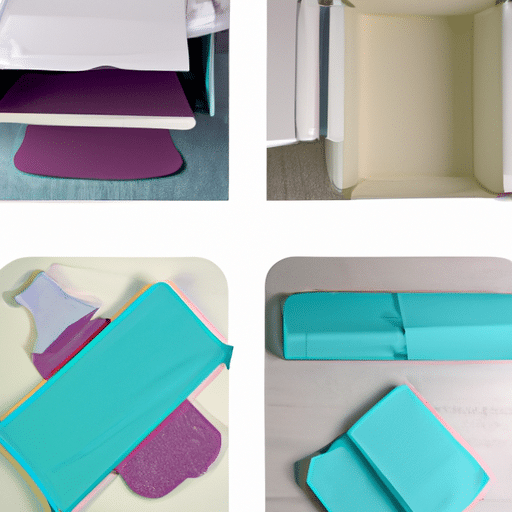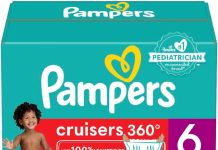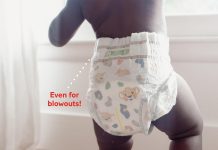Choosing the right pad for your changing table surface can be a daunting task, but fret not! We’re here to lend a helping hand. With the plethora of options available in the market, it’s crucial to consider factors such as size, comfort, and safety to ensure a seamless and cozy diaper-changing experience. In this article, we’ll guide you through the essential considerations and provide useful tips to help you find the perfect pad that fits your changing table surface like a glove. So let’s dive in and make diaper changes a breeze!
Review contents
Factors to Consider in Choosing a Pad
Size of Changing Table
One of the first factors to consider when choosing a changing pad is the size of your changing table. It is important to measure the dimensions of your changing table surface to ensure that the pad you choose will fit properly. A pad that is too small may not provide adequate coverage and could pose a safety risk, while a pad that is too large may not fit securely and could potentially slide off the table. Taking accurate measurements of your changing table will ensure that you select a pad that is the right size for your needs.
Thickness and Comfort
Another important factor to consider is the thickness and comfort of the changing pad. A thicker pad can provide added comfort for your baby, especially during longer diaper-changing sessions. Look for a pad that is made from high-quality, supportive materials to ensure that it will remain comfortable and durable over time. It is also worth considering whether the pad is firm enough to offer proper support for your baby’s back and neck while still being comfortable for them to lie on.
Waterproof and Easy to Clean
Accidents happen during diaper changes, so it is essential to choose a changing pad that is waterproof and easy to clean. Look for pads that have a waterproof or water-resistant cover to protect against leaks and spills. This feature will not only make cleaning up messes easier but also help prevent the growth of bacteria or mold. Additionally, consider whether the pad has a removable cover that can be machine-washed or wiped clean, as this will make maintenance a breeze.
Safety Features
The safety of your baby is of utmost importance, so when choosing a changing pad, be sure to consider the safety features it offers. Look for pads that have safety straps or belts to secure your baby in place and prevent them from rolling or falling off the table. Some pads may also have raised sides or contoured edges to provide additional security. It is crucial to carefully check the safety guidelines and features of any changing pad you are considering to ensure that it meets the necessary safety standards and provides a secure environment for your baby.
Material and Texture
The material and texture of a changing pad can play a significant role in both its comfort and durability. Common materials used for changing pads include foam, vinyl, and organic cotton. Foam pads are often lightweight and cushy, providing a comfortable surface for your baby. Vinyl pads are typically more water-resistant and easier to clean, making them a practical choice. Organic cotton pads are a great option for those looking for a more natural and eco-friendly option. Consider your preferences, as well as any potential sensitivities your baby may have, when choosing the material and texture of your changing pad.
Types of Pads
Standard Changing Pad
A standard changing pad is the most common type of pad available and is typically rectangular in shape. These pads come in various sizes and thicknesses to accommodate different changing tables and personal preferences. They provide a flat, stable surface for diaper changes, with raised sides for added safety. Standard changing pads are a versatile choice suitable for most changing table surfaces.
Contoured Changing Pad
Contoured changing pads are designed with a slight incline, providing extra support for your baby’s back and neck. These pads often have a concave middle section, ensuring that your baby stays in the center and reducing the risk of rolling off the pad. Contoured pads offer a more ergonomic and comfortable shape for your little one during diaper changes.
Portable Changing Pad
If you frequently travel or need to change your baby’s diaper on the go, a portable changing pad is an excellent choice. These pads are lightweight and compact, making them easy to carry in a diaper bag or stroller. Portable changing pads often fold or roll up for convenience, and some may even include additional storage compartments for diapers, wipes, or other essentials.
Disposable Changing Pad
Disposable changing pads are a convenient option for parents who are often on the move or prefer not to worry about cleaning and maintaining a reusable pad. These pads are typically made of absorbent materials and come in a compact, disposable form. While they may not offer the same level of comfort or longevity as reusable pads, disposable changing pads can be a practical solution for certain situations.
Matching Pad with Changing Table
Measurements
When looking to match a pad with your changing table, it is crucial to consider the measurements of both the pad and the table. The pad should fit securely within the boundaries of the changing table surface, ensuring that there is no risk of it shifting or sliding off. Take accurate measurements of your changing table, taking into account any raised edges or lips that the pad should fit within.
Shape and Design
The shape and design of the changing pad should also complement the shape and design of your changing table. While rectangular pads are the most common, some changing tables may have non-standard shapes, such as oval or rounded edges. Ensure that the pad you choose matches the shape of your changing table to provide a seamless fit.
Attachment and Anchor
To enhance the stability and security of your changing pad, consider whether it can be attached or anchored to your changing table. Some pads come with straps or fasteners that can be used to secure the pad in place. This feature is particularly important if your changing table does not have raised edges or if you have an active baby who tends to move around during diaper changes. Anchoring the pad to the table will help prevent any accidents or injuries.
Finding the Right Fit for Your Needs
Budget and Cost
Like any other baby product, changing pads come in a range of prices to fit different budgets. Consider your budget and determine how much you are willing to spend on a changing pad. While it’s important to invest in a quality pad that meets your needs, there are also affordable options available that provide excellent comfort and safety.
Durability and Longevity
Changing pads are subjected to frequent use and can experience wear and tear over time. When choosing a pad, it is essential to consider its durability and longevity. Look for pads that are made from high-quality materials and have reinforced stitching or seams to ensure that they can withstand regular use and last throughout your baby’s diaper-changing journey.
Style and Aesthetics
While the primary function of a changing pad is to provide a comfortable and safe surface for diaper changes, there is no reason why it can’t look stylish and aesthetically pleasing as well. Many changing pads come in a variety of colors, patterns, and designs, allowing you to choose one that complements your nursery decor or personal style.
Ease of Use
When you have a wriggly baby who requires frequent diaper changes, convenience and ease of use become essential factors to consider. Look for pads that are easy to clean and maintain, with features such as removable covers that can be machine-washed or wiped clean. Consider whether the pad is lightweight and easy to move around, especially if you anticipate needing to bring it to different locations within your home.
Additional Considerations
Multipurpose Functionality
Some changing pads offer multipurpose functionality, which can be a great feature for those who want to maximize their investment. These pads may double as a playmat or have additional compartments for storage. If you are looking for a versatile product that can serve multiple purposes beyond diaper changes, consider these options.
Eco-Friendly and Sustainable Options
For environmentally conscious parents, there are eco-friendly and sustainable options available in the market. Look for changing pads made from organic or recycled materials, as well as pads that are free from harmful chemicals. These pads not only provide a safe and healthy environment for your baby but also contribute to sustainable practices.
Brand Reputation and Reviews
Before making a final decision, it is always a good idea to research the brand reputation and read reviews from other parents. Look for brands with a history of producing high-quality and reliable products. Reading reviews from other parents can provide valuable insights into the pros and cons of different changing pads, helping you make a more informed decision.
Accessories and Add-ons
Lastly, consider whether there are any accessories or add-ons available for the changing pad you are considering. Some pads may come with additional features such as built-in toy bars, pockets for storage, or changing pad covers in different designs. These extras can enhance the functionality and convenience of the pad, providing added value for you and your baby.
In conclusion, choosing the right changing pad for your baby’s needs involves considering various factors. From the size and comfort to the safety features and material, each aspect plays a role in ensuring a positive diaper-changing experience. By evaluating your changing table, matching the pad to its dimensions and design, and taking into account your budget and personal preferences, you can find the perfect pad for both you and your baby. Remember to also explore additional considerations such as multipurpose functionality, eco-friendly options, and brand reputation to make an informed choice. With the right changing pad, you can make diaper-changing time a comfortable and enjoyable experience for both you and your little one.






























